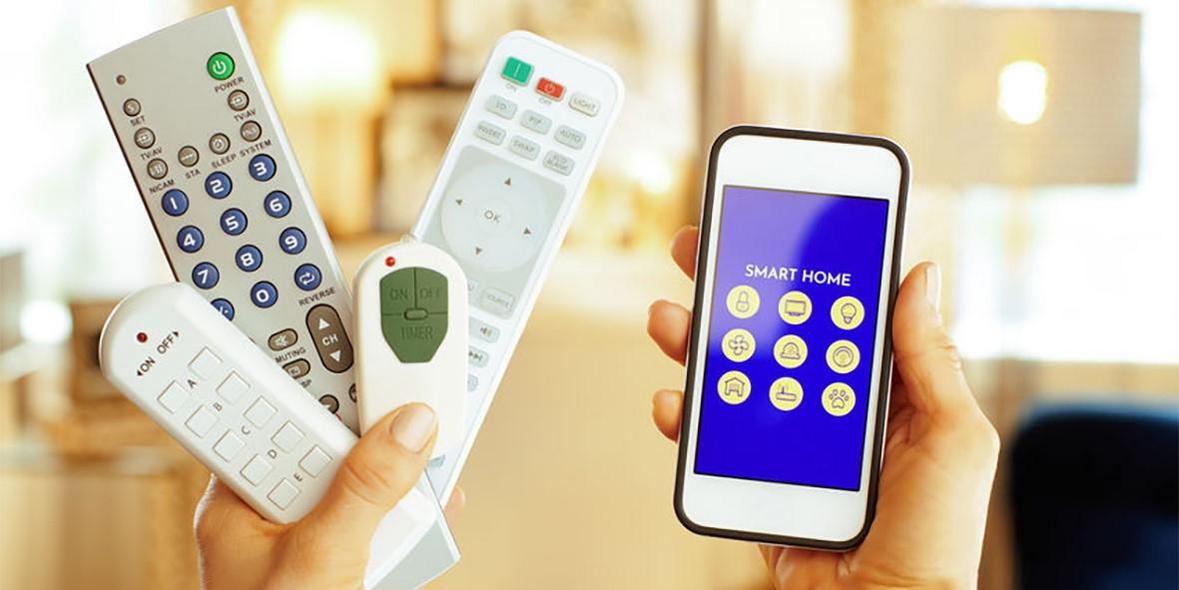15. Jan 2021
A Fresh Perspective: three ways KNX changed my opinion of smart

Luke Thomas of Ivory Egg explains the key features of KNX that turned him into a convert, and how these can be exploited to increase business.
Until joining Ivory Egg, my idea of a smart home was smart plugs, off-the-shelf 'intelligent' lightbulbs, a few clever widgets on my phone and some home assistant speakers dotted about the house.
Please feel free to laugh at my ignorance now!
Fast-forward a few months and KNX has unravelled this mess of isolated solutions in my mind. I now see a set of unconnected smart devices solving some issues in the home whilst causing many more. If we ignore the strain put on the home network, the fact that my partner struggles to switch a light on if it has not been turned off correctly shows that the whole thing needs a rethink.
I've found that devices such as smart plugs create 'stupid smart solutions' from existing technologies, in place of real intelligence and automation. They may be a good introduction, but the education must be done around true smart solutions.
To that end, I'm sharing three of the reasons why I'm now an advocate of KNX. This is a fresh perspective from someone new to the industry. Take it as a reminder of points to share with your potential customers when discussing solutions. Perhaps it will remind you of why you also love working with KNX.
1. 500+ brands that would never normally work together, talk the same language
Even in the smallest of homes, the chances are that the lights, TV, heating system and speakers are all made by different manufacturers. Each will be an expert in its particular industry but will also have its own control system.
This was unavoidable to me. Clutter was a trade-off for smarter devices. We have 'app acne' on our phones, 'wall acne' from light switches alongside thermostats, and 'control clutter' from a plethora of remotes.
So, you can imagine my amazement when I heard that 500 manufacturers now use KNX to work seamlessly together. The scale and coverage of these manufacturers must not be underestimated. It represents an unignorable vote of confidence in KNX and its future from the tech industry as a whole. Perhaps more importantly, it means devices are talking. No more workarounds, widgets, acne or clutter. By replacing it all with a single control platform operating all devices together and in sync, the user can take charge of the building, transforming how it is used.
I find myself saying to friends, "You might not have heard of KNX, but you'll know the brands that use it". Namedrop a few of these and customers will soon want to know more about how it can transform their home!
2. It defines scalability
KNX is built to grow. By operating on a single standardised bus cable with a common language, it not only means different brands work together, but it also allows the system to grow easily using the existing infrastructure. That means every time a manufacturer joins the KNX contingent, you can be confident in scaling up projects and adding in new devices.
The bus cable also removes limitations associated with devices operating directly on the network. KNX gives you the option to have a dedicated line of communication for the smart home, unencumbered by other users.
Updating the hardware and software of the system is a support service that you can easily sell to customers, while backwards compatibility means growing projects comes without worry. This is the backbone of a smart building.
3. It could save the planet
Many of the benefits associated with KNX are obvious. Enabling full building control, saving time and having access to more manufacturers that all speak through a single control system is great. But what about the benefit to the planet?
Lower operating costs are a major draw for many to KNX, but when you look at the bigger picture you realise something more is happening. We're unconsciously improving our relationship with energy. The most efficient system is one that is off. Heating a room often means heating an entire home. We light a hallway all evening but only walk down it a few times. Many systems are not built to consider how we use space and thus energy. By becoming conscious of the 'why' and building a solution around this we can deliver efficient automation that accommodates the occupant.
Furthermore, ventilation has become a safety necessity in more recent times. The ability to monitor room occupancy and use the HVAC system to keep occupants healthy takes this idea of saving the planet to a new level.
Conclusion
Since I joined Ivory Egg, the number of manufacturers working on KNX-compatible devices ticked past the 500 mark and innovations are being made every day to continue its development. At 30 years old, the pace of change is phenomenal and the ability for KNX to improve people's lives is still only in its infancy.
I've been revisiting if dumb devices that I previously thought were amazing offer any of the above benefits to my life. Are the lights coming on when the room gets dark or when the system believes it to be sunset? Is the heating coming on because it is cold and people are home or because it usually would? Is there even water in the kettle or is the smart plug just a gimmick to boil it?
In most cases, these devices now sit in a box under the bed. Consumer smart devices are more of a novelty, whereas KNX systems are changing the way people interact with their homes and energy.
So, I encourage you; next time you're speaking to someone about a project, think about the reason you've bought into KNX and what it means for homeowners, the industry and the planet. Give them the introduction I've had - they will be sold!
Luke Thomas is the Marketing Manager for Ivory Egg, a supplier of leading KNX products and provider of KNX training courses.
Highlights
-
 News
NewsThe KNX Journal 2025 is now available
The latest edition of our annual smart home and building solutions magazine has arrived. The KNX Journal 2025 offers ... -
 News
NewsNew ETS App: Password Manager
The ETS Password Manager is a powerful new ETS App introduced in ETS 6.3 that eliminates the need to repeatedly enter ... -

